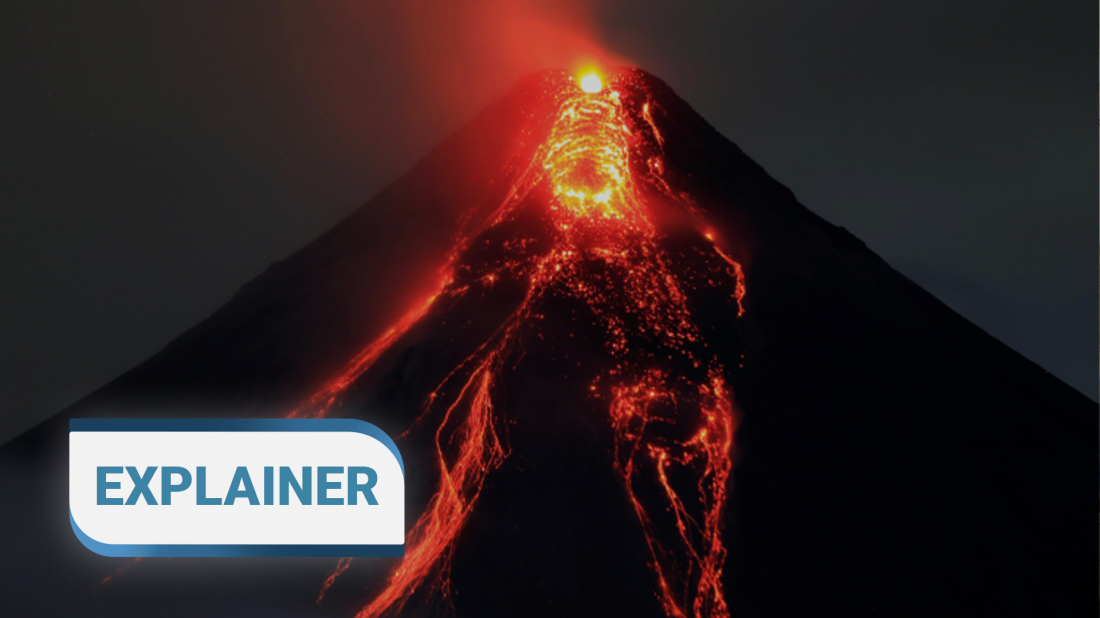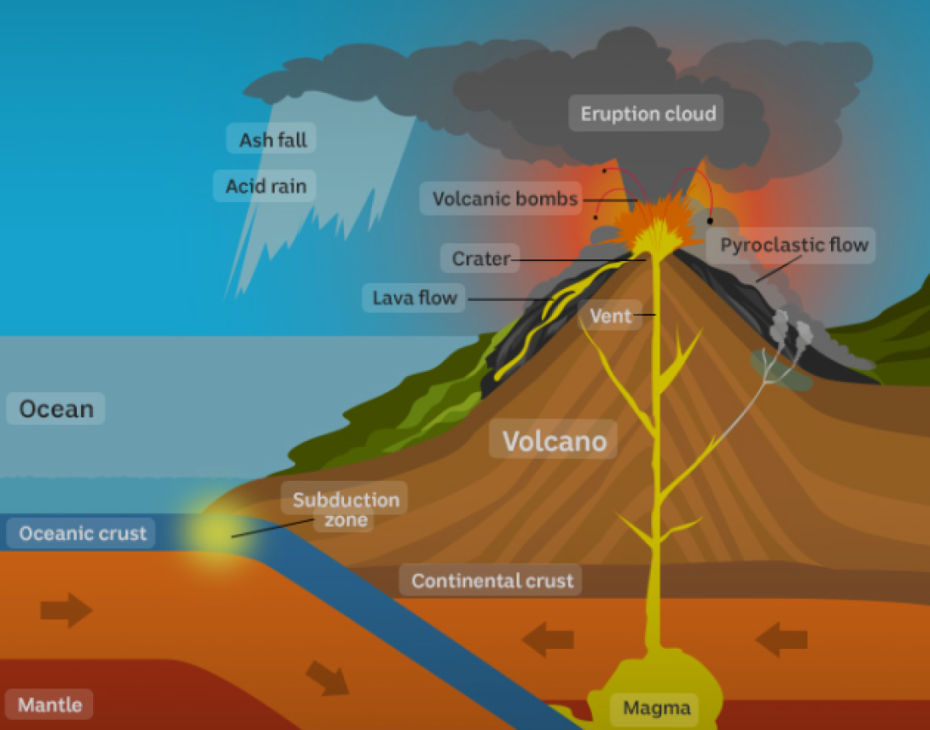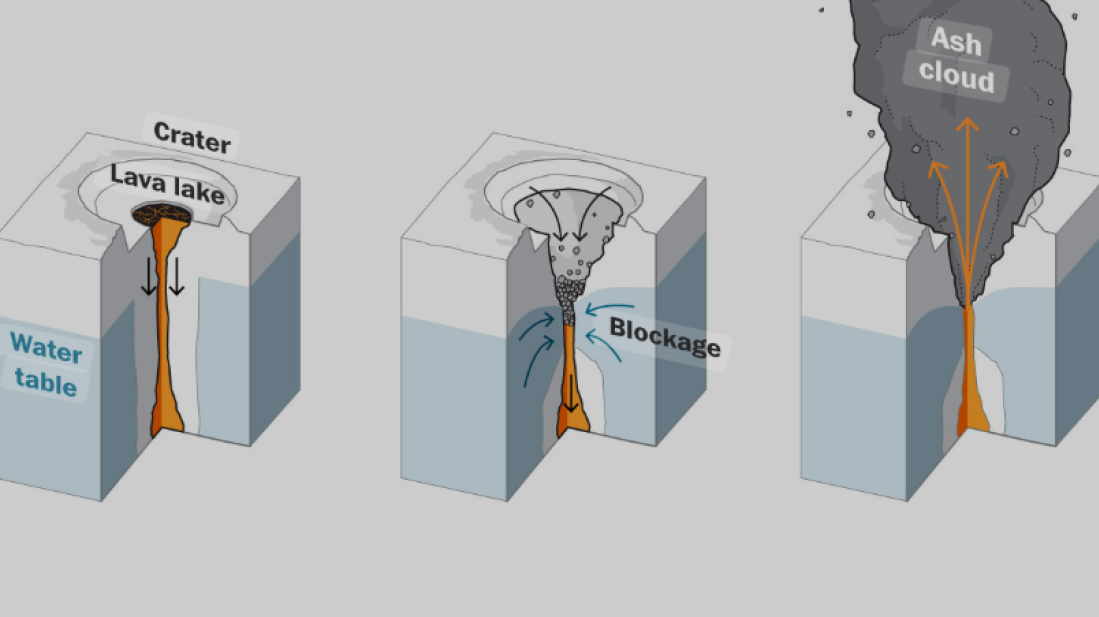Power supply resumes in Berlin after longest blackout in decades
Power has been fully restored to a neighbourhood in Berlin after an arson attack triggered a blackout that lasted more than four days — the second s...

From Hawaii’s fiery lava fountains to Italy’s ash-filled skies, it may feel like volcanoes are erupting everywhere in 2025. With nearly 50 eruptions already this year, many are asking, is the Earth getting more active? The truth is far less alarming, and far more fascinating.
From lava in Hawaii to ash in Italy, it feels like the planet is stirring
In the first few months of 2025, the world has already seen devastating wildfires, floods, earthquakes, and now, volcanoes are making headlines once again.
In Hawaii, lava fountains from Kilauea soared up to 400 feet into the air in February. In Italy, Mount Etna erupted twice in quick succession. And off the coast of Oregon, scientists are watching the Axial Seamount, a vast underwater volcano expected to erupt soon.
With nearly 50 eruptions recorded so far this year, it may seem like the Earth is becoming more geologically active.
“This is normal Earth behaviour,” says Dr. Ed Venzke of the Smithsonian’s Global Volcanism Program. “We typically see 40 to 50 volcanoes erupting at any given time.”
Earth is always active — we’re just noticing it more
Volcanic activity has remained steady for centuries. Each year, between 50 and 70 eruptions occur around the globe. As of February 2025, 46 volcanoes had erupted, a completely normal figure.
So why does it feel like there are more eruptions?

1. We have better tools to see them
Thanks to satellites, webcams, and smartphones, volcanoes are monitored like never before.
“The explosion of media coverage gives the impression of increased activity,” says volcanologist Dr. Janine Krippner. “But it’s our tools and awareness that have grown, not the number of eruptions.”
2. More people live near volcanoes
Today, more than 800 million people live within 100 km of an active volcano. That means more eruptions are noticed, filmed, and shared.
3. Dramatic footage spreads fast
Volcanic eruptions are visually spectacular, lava flows, glowing craters, and ash clouds trend fast online. But that doesn’t mean they’re increasing.
The volcanoes shaping 2025
“Kilauea is one of the most active volcanoes on Earth, and we’re always monitoring it,” said USGS geologist Dr. Ken Hon.
“Axial Seamount has one of the clearest eruptions cycles we’ve ever tracked,” says oceanographer Dr. Bill Chadwick. “It’s like a heartbeat beneath the sea.”
What is the Ring of Fire — and why is it so active?
The Ring of Fire is a 25,000-mile belt around the Pacific Ocean that contains 75% of Earth’s active volcanoes and most of its earthquakes. Countries like Japan, Indonesia, Chile, and the United States sit along this geologically active zone.
This region is active because of tectonic plate boundaries, areas where the Earth’s crust constantly moves. When plates collide or pull apart, magma rises and erupts.
“It’s where the Earth recycles itself,” explains seismologist Dr. Lucy Jones. “Volcanoes and earthquakes are part of the same system.”
How volcanoes affect aviation and travel
Volcanic eruptions aren’t just dramatic, they can also seriously disrupt air travel.
Ash clouds are a major aviation hazard
Volcanic ash contains tiny, sharp glass particles that can damage jet engines, scratch cockpit windows, and interfere with navigation systems. When sucked into turbines, ash can melt, clog fuel nozzles, or even shut down engines mid-flight.
“Volcanic ash is extremely dangerous for aircraft. It's invisible to radar and hard to avoid unless you have early warnings,” says Captain Chris Finlay, an aviation safety expert.
Famous flight disruptions caused by eruptions
In 2010, Iceland’s Eyjafjallajökull volcano erupted and spewed ash into European skies for days. More than 100,000 flights were cancelled, affecting over 10 million passengers. It was one of the largest aviation disruptions since World War II.
In 1982, a British Airways flight lost all four engines after flying through an ash cloud over Indonesia. Fortunately, the crew restarted them and landed safely, but it was a wake-up call for the aviation world.
Global systems monitor volcanic ash
To prevent future disasters, Volcanic Ash Advisory Centres (VAACs) have been established worldwide. These centres use satellite data, weather models, and observatory reports to track ash clouds and provide alerts to airlines.
“Real-time tracking is essential,” says Dr. Simon Carn, a volcanologist who specialises in satellite monitoring. “One missed plume can put hundreds of lives at risk.”

Could a massive eruption happen soon?
Most eruptions are mild, but mega-eruptions, like Tambora in 1815, can drastically reshape the planet.
That eruption caused a global temperature drop, crop failures, famine, and the infamous “year without a summer.”
“There’s about a one-in-six chance of a similar massive eruption this century,” warns climate professor Markus Stoffel. “It’s not a matter of if, but when.”
And in our warmer, more interconnected world, the consequences could be far greater, both environmentally and economically.
How volcanoes can cool the planet
When a volcano erupts, it can release sulfur dioxide (SO₂) into the stratosphere, where it forms reflective particles that cool the Earth by blocking sunlight.
“These volcanic aerosols can blow around the world and last for years,” says Dr. Alan Robock, a climate scientist at Rutgers University.
In 1991, Mount Pinatubo in the Philippines did exactly that, it cooled the planet by 0.5°C for nearly two years.
Are we prepared?
Experts say we're still not ready for a large-scale volcanic disaster.
“Humanity does not have a plan for the next Tambora,” warns Stoffel. “We need simulations, global food stockpiles, and coordinated evacuation systems.”
Some models estimate the cost of a large eruption could top $3.6 trillion in the first year alone — disrupting agriculture, trade, health, and stability.
Final thought
Despite what the headlines suggest, volcanic activity in 2025 is normal. What’s changed is how closely we observe it, and how deeply it affects our interconnected world.
Volcanoes are part of Earth’s natural rhythm. They built the land we walk on, and they may one day reshape it again.
“We’re just beginning to understand what’s possible,” says volcanologist Chris Newhall. “And we’re not fully prepared, yet.”
Open-source intelligence (OSINT) sources reported a significant movement of U.S. military aircraft towards the Middle East in recent hours. Dozens of U.S. Air Force aerial refuelling tankers and heavy transport aircraft were observed heading eastwards, presumably to staging points in the region.
Diplomatic tensions between Tokyo and Beijing escalated as Japan slams China's export ban on dual-use goods. Markets have wobbled as fears grow over a potential rare earth embargo affecting global supply chains.
Two people have been killed after a private helicopter crashed at a recreation centre in Russia’s Perm region, Russian authorities and local media have said.
Iran’s chief justice has warned protesters there will be “no leniency for those who help the enemy against the Islamic Republic”, as rights groups reported a rising death toll during what observers describe as the country’s biggest wave of unrest in three years.
"Change is coming to Iran" according to U.S. Senator Lindsey Graham during an interview with Fox News on Tuesday (6 January). He warned Iran that "if you keep killing your people for wanting a better life, Donald Trump is going to kill you."
Experts say COP30 failed to deliver concrete commitments on fossil fuels and deforestation despite high expectations.
Snow and ice caused travel chaos in northwest Europe on Wednesday, while others were delighted by the snow-covered streets of Paris, venturing out on sledges and skis.
Emergency services across southeastern Australia have been placed on high alert as a blistering air mass pushes temperatures to dangerous extremes, reviving painful memories of the nation's catastrophic fire seasons of the past decade.
Türkiye’s Zero Waste Foundation has released the Zero Waste Encyclopaedia in Turkish and English, ahead of hosting COP31 in 2026, providing a comprehensive resource on global zero waste practices.
Widespread flash flooding and mudflows have hit Southern California after heavy rain, prompting evacuation orders and warnings for motorists to stay off roads, authorities said.
You can download the AnewZ application from Play Store and the App Store.

What is your opinion on this topic?
Leave the first comment